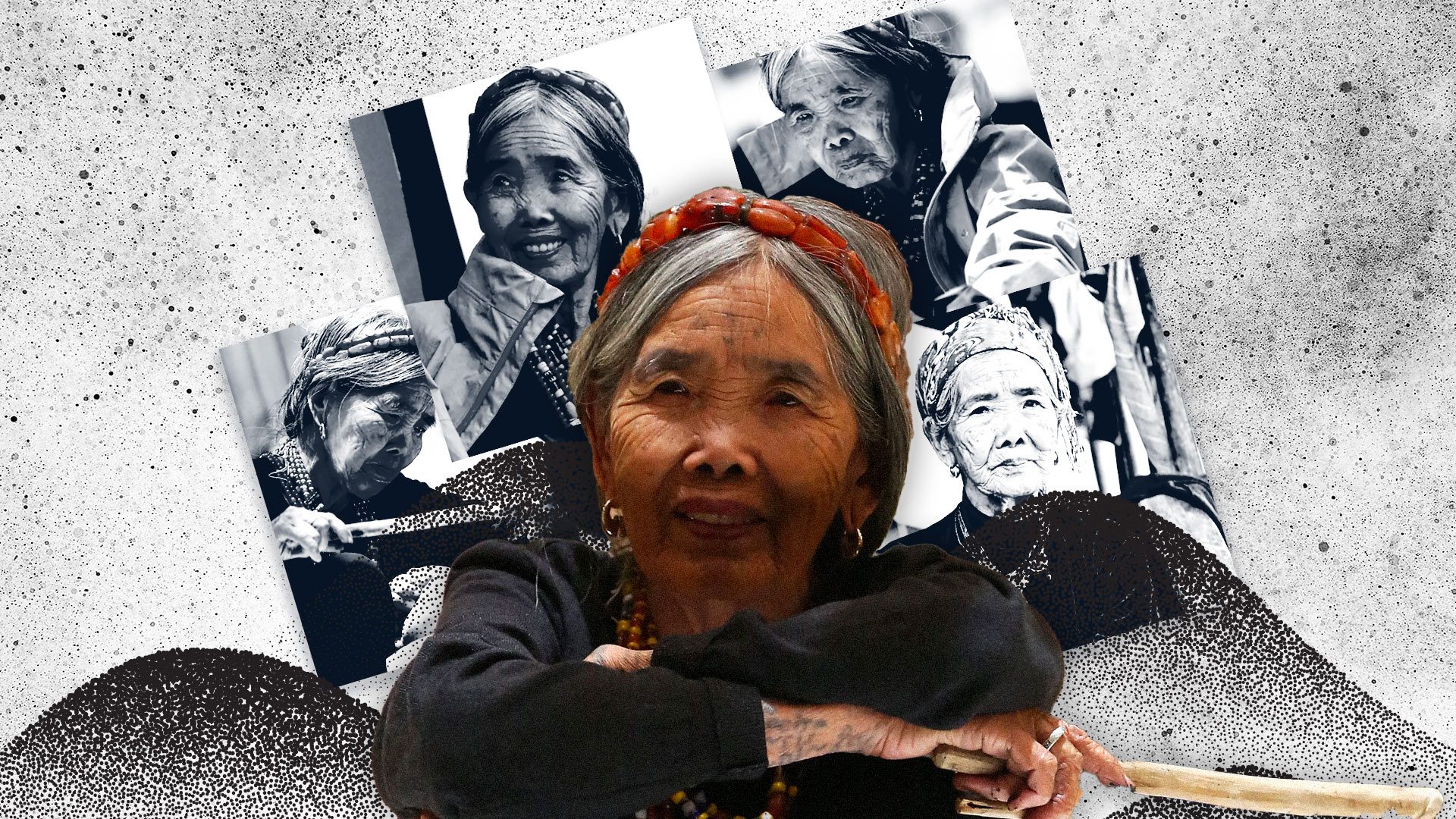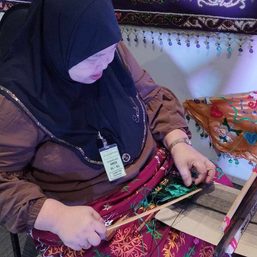SUMMARY
This is AI generated summarization, which may have errors. For context, always refer to the full article.

On April 1st, the Philippine edition of Vogue launched its beauty issue. On the cover was Apo Whang-Od, an elder of the Butbut tribe of Buscalan, Kalinga.
This legend of Whang-Od as “the last tattoo artist” has been repeated numerous times, across both lifestyle and academic publications, with a recent piece in Tatler by Corinne Redfern calling her “the oldest tattoo artist in the world,” “the first female tattoo artist,” and “the most famous nonagenarian in Southeast Asia.” Aside from lifestyle and fashion media, Whang-Od’s name broadly resonates across travel blogs, drawing hundreds of visitors each week to the Cordilleras. Receiving what she calls “The Mark of Buscalan” – three dots said to symbolize herself and the next two generations of mambabatok, or tattoo artists – punctuates this journey, which often begins in the metropolis.
Most narratives describe the ardousness of the trip in great detail, with Vogue writer Audrey Carpio mentioning the difficult trek and remoteness of Buscalan not once, but twice in her article. While these are faithful and transparent accounts of what it takes to reach the Butbut enclave, they also highlight the disparate relations of Filipino lowlanders or urban-dwellers to indigenous groups and other communities outside the metro. The latest offerings in particular from Vogue and Tatler translate these relations into the buzzy and catchy vernacular of travel and lifestyle publishing.
While Carpio, Redfern, and Celine Mallari (who wrote in Vogue about the next generation of Butbut artists) are careful to refrain from using the often appropriative and reductive copywriting language seen in fashion magazines, there remain the problems that come with an ancient tradition entering the cash economy and of ancestral lands being touted as tourist attractions. Online, these problems are often reduced to questions of Whang-Od herself being “exploited” and to questions of appropriation on the part of the tourist/consumer.
For this, a number of threads and conversations about Whang-Od, her nieces, and the agency of the Butbut community have been threshed out, with Redfern and Carpio touching on the subject as well. Quoting Dr. Analyn Salvador-Amores, Carpio notes: “Instead of asking who owns culture, we should ask how we can promote respectful treatment of native culture and indigenous forms of self-expression within mass societies.”
It is often pointed out that the community has chosen to resituate the practice of tattooing on their own terms, departing from the ceremonial traditions and meanings the tattoos once held within the group, towards a source of income and livelihood, imparted by the younger generations on to outsiders. These are also, incidentally, the same terms that have made Whang-Od and the Butbut tribe ineligible for the prestigious GAMABA, or Gawad Manlilikha ng Bayan Award, which is only given provided the traditional aims of the cultural practice remain intact. Given that the traditional context of the Buscalan tattoo is rooted in violence (at least for men) only shows how even our terms for cultural recognition demand revision.
Resituating their practice in this way has culturally and economically changed collective life for the Butbut. Accounts online often point at the modernization of the housing in Buscalan, with more and more Butbut families swapping corrugated tin for concrete building materials. What demands confronting is how such levels of economic prosperity and cultural visibility can sit side-by-side with the unsexy systemic issues of uneven development and extraction that confront many indigenous Filipinos – including the Butbut.
If anything, Vogue’s attempts at sparking more progressive conversations around beauty only highlights how the marketing and consumption of culture can overshadow or silence the more difficult conversations about development, “modernization,” and progress. Is it really progress if it parallels continued exploitation? Can we sincerely call a group culturally relevant while ignoring or avoiding the ways in which they remain politically marginalized?
That these systemic issues are often enabled by both their figurative and literal distance from those of us living in the center unsettles the type of writing applied to visiting Buscalan to be tattooed by the now legendary Whang-Od. Remoteness does not only make for a good travel blog entry, or in this case fashion magazine article. It also paves the way towards an otherness – one which lends itself to the fetishization of the Mark of Buscalan, as well as an otherness that allows the tourist to remove themselves from the inconvenient and remote location once their business is done.
In her closing paragraph, Carpio asserts: “Culture survives through representation, not appropriation.” Returning to the question of appropriation further highlights the shortfalls of fashion journalism and lifestyle publishing as a venue for progressive discourse. In these venues, appropriation will always be discussed through a neoliberal lens: as a matter of individual action or perspective. It also gets reduced to questions of the so-called “subjectivity” of beauty or iconicity of individuals, especially for a magazine issue of such magnitude and consequence as Vogue’s Beauty issue.
If anything, this is not a matter of the consumer (or reader) appropriating cultures, but of fashion publishing appropriating progressive discourse – cherry-picking the cultural and aesthetically pleasing bits, while avoiding the trickier muck: muck which, if we dig deeper, has more to do with fashion and fashion publishing than most fashion publications are willing to acknowledge. Muck like the marginalization of IP groups – an issue which cannot be divorced from an image like that of Whang-Od on the cover of Vogue. – Rappler.com
Add a comment
How does this make you feel?





There are no comments yet. Add your comment to start the conversation.